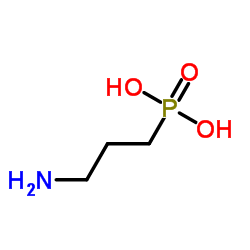| Structure | Name/CAS No. | Articles |
|---|---|---|
 |
3-Aminopropylphosphonic acid
CAS:13138-33-5 |
|
 |
O-Phosphorylethanolamine
CAS:1071-23-4 |